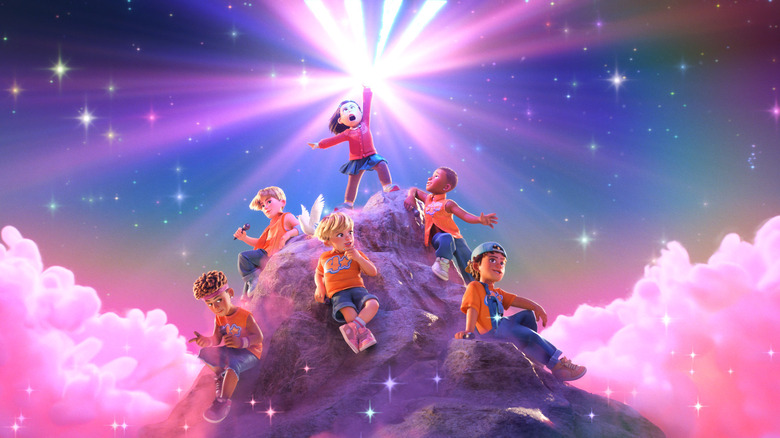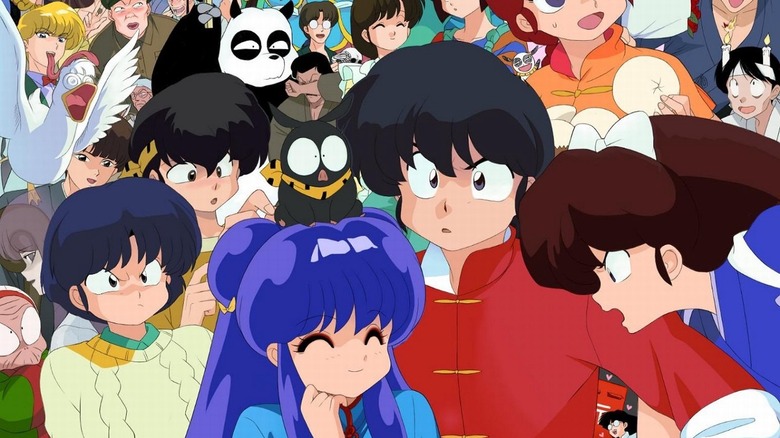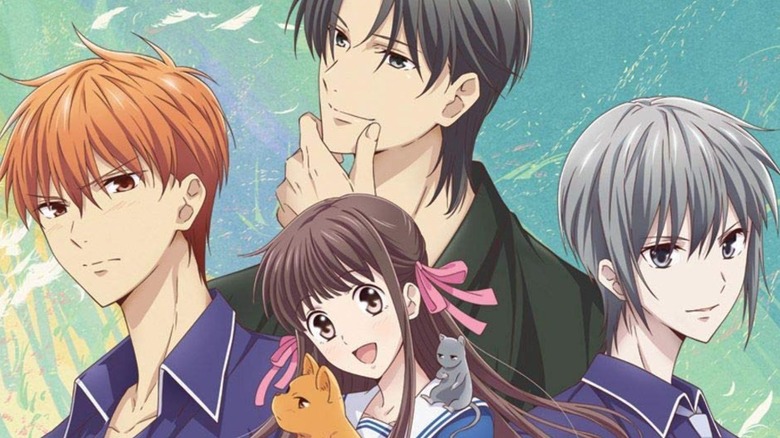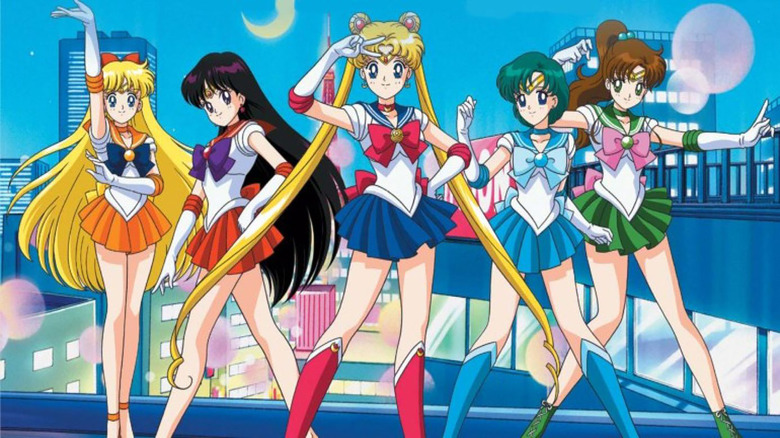The Three Must-Watch Anime That Inspired Turning Red Director Domee Shi
When director Domee Shi began providing artistic inspiration for her film "Turning Red," she knew she would be forcing some of the animators out of their comfort zone, and others into a world they'd only dreamed of creating. Inspired heavily by 1990s and early 2000s anime, "Turning Red" effortlessly combines the western style of animation that made Pixar iconic, and the massively influential eastern style of anime that Shi grew up loving. The result is a highly expressive film where 13-year-old Mei Lee gains stars in her eyes when she's amazed, giant drops of tears when she's sad, a gigantic bean-shaped mouth to showcase the full range of her emotions, and pupils that wildly shift in size depending on how she's feeling.
For a film like "Turning Red," where our main character transforms into a giant red panda at any sign of a big emotional shift, the incorporation of anime elements only adds to the storyline's effectiveness. In a recent interview with Shi, we asked her to give us some anime homework to prepare for "Turning Red." I'm happy to say that Shi didn't disappoint, and recommended three all-time greats that are absolutely worth checking out.
Ranma ½
One of the biggest anime inspirations for "Turning Red" is the series "Ranma ½" which aired in Japan from 1987-1996. Viz Media licensed the show in 1993, bringing it to the western world as the very first anime TV series to ever be released in English with a faithful uncut dub. The story follows a teenage boy named Ranma Saotome who accidentally falls into the "Spring of Drowned Girl" and is cursed to become a girl when splashed with cold water, only being brought back to his correct identity with hot water. The anime was extremely popular in the 1990s, with Ranma not only accepting his ability to transform between genders, but frequently and willfully transforming in order to fulfill his goals. The screwball anime is largely remembered only for its famous gender-swapping angle, but "Ranma ½" also serves as a slapstick comedy of errors and an accidentally affirming (albeit clumsy) allegory for transmasculinity.
"It's like martial arts, high school drama, transformation, comedy, action, and slapstick," said Shi. "We borrowed a lot of its tone and the whole transforming between human and animal aspect."
While Mei is firmly a girl throughout the entire movie, like Ramna, she frequently intentionally transforms into the Red Panda when necessary. There's a certain beauty about both Mei and Ramna learning to embrace an intrinsic part of themselves that makes them "different" in the eyes of the status quo, and realizing that what they thought was a "curse" is actually what makes them wonderful.
"Ranma ½" is currently available to stream on Peacock.
Fruits Basket
I was in middle school when I read my first manga, the wonderful "Fruits Basket," about Tohru Honda, an orphan girl who, after meeting Yuki, Kyo, and Shigure Sohma, discovers that the 13 members of the Sohma family are possessed by the animals of the Chinese zodiac and are cursed to turn into their animal forms when they are weak, stressed, or when they are embraced by anyone of the opposite sex that is not possessed by a spirit of the zodiac.
"I loved that series growing up,” said Shi. "It's comedy, it's high school, it's great." The manga was given the anime treatment in 2001, and with Mei transforming into a red panda whenever her emotions get too hard to handle (yes, that does include the feeling she gets when she thinks about cute boys), the "Fruits Basket" influence is easy to see.
The original "Fruits Basket" anime is available on Crunchyroll, and the 2019 anime is streaming on Hulu.
Sailor Moon
"Fighting evil by moonlight, winning love by daylight, never running from a real fight, she is the one named Sailor Moon!" With a movie that so heavily values the importance of female friendships, Domee Shi was of course inspired by "Sailor Moon." Shi admits that much of the pastel and high-femme color palettes of "Sailor Moon" inspired the look of "Turning Red," but the friendship was very much an homage to the Sailor Scouts.
"Middle school girls saving the world with superpowers, how can you go wrong with that?" Shi asked. "Sailor Moon" was extremely influential in the world of anime, and along with "Dragon Ball Z," helped spark a wave of anime love in the west. "Sailor Moon" is still putting out new content even today, because you can't keep a good magical girl down.
"Sailor Moon" is available to stream on Hulu and "Sailor Moon Crystal" is on Netflix.



